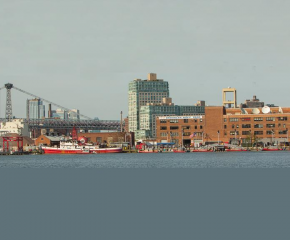Unos de sus logros más importantes fue la ley de conservación de la masa o ley de Lavoisier. In this experiment Lavoisier found that mercury (II)oxide, when heated, decomposed into liquid mercury and an invisible and previously unknown substance: oxygen gas. In general, if you are studying the effect of a certain factor or the outcome of an experiment, the effect or outcome is the dependent variable. Lavoisier showed that although matter changes its state in a chemical reaction, the quantity of matter is the same at the end as at the beginning of every chemical reaction. History credits multiple scientists with discovering the law of conservation of mass. A red oxide of mercury was formed on the surface of the mercury in the retort. Antoine-Laurent de Lavoisier (26 August 1743 – 8 May 1794) was a French noble prominent in the histories of chemistry and biology.He stated the first version of the law of conservation of mass, recognized and named oxygen and hydrogen He is often referred to as the father of chemistry, in part because of his book Elementary Treatise on Chemistry. Regarded as the Father of Modern Chemistry, Antoine Lavoisier was a prominent French chemist, philosopher, and leading figure in the 18th-century Chemical Revolution. The great French chemist Antoine Lavoisier discovered the Law of Conservation of Mass in part by doing a famous experiment in 1775. He was the first to announce that air was made up of two gases — oxygen and what he called azote (now called nitrogen) — and by the 1780s Lavoisier was a well-known member of … We know the chemist Lavoisier for identifying oxygen. He eventually concluded that common air was not a simple substance. This law was formulated by Antoine Lavoisier in 1789. In the seventeen hundreds, the element name "oxygen" was given by the father of modern chemistry, Antoine Lavoisier. 8 quotes from Antoine Lavoisier: ' Dans la nature rien ne se crée, rien ne se perd, tout change. It was in 1772 that Lavoisier found out the effects of combustion of phosphorus. Mercury was placed in the retort at left, the end of which led to an air chamber in a bell jar over mercury (right). He also hints at the rearrangement of matter in reactions. Lavoisier, who was familiar with Priestley’s research and held him in high regard, hurried back to his laboratory, repeated the experiment, and found that it produced precisely the kind of air he needed to complete his theory. One of his favorite experiments being turing HgO into Hg+O. Early engraving showing the apparatus used by Antoine Lavoisier (1743-94) to demonstrate the formation of metal oxides. He was known for his skills in experimentation and loved to separate the oxygen molecule from HgO. Antoine Lavoisier. The chemical revolution, also called the first chemical revolution, was the early modern reformulation of chemistry that culminated in the law of conservation of mass and the oxygen theory of combustion.During the 19th and 20th century, this transformation was credited to the work of the French chemist Antoine Lavoisier (the "father of modern chemistry"). Antoine Laurent Lavoisier is beheaded in the early days of the French Revolution. A brief description of Antoine Lavoisier’s work further illustrates the significance of In nature nothing is created, nothing is lost, everything changes. Antoine Lavoisier played the central role in what has come to be known as the chemical revolution and he was active also in agricultural and fiscal reform as well as technological development. It was discovered by Antoine Laurent Lavoisier (1743-94) about 1785. He used this experiment to help himself come up with the Law of Conservation. Now, to measure the amount of heat given off during combustion or respiration, they used an apparatus called a Calorimeter. In Paris, the intrigued Lavoisier repeated Priestley's experiment with mercury and other metal calces. However, these losses are very small, several orders of magnitude smaller than the mass of the reactants, so that this law is an excellent approximation. Antoine Lavoisier was a French chemist, often referred to as “The Father of Modern Chemistry” for his influence in bringing the science to an evidence-based, measurement-centric one. Contribution. Antoine-Laurent Lavoisier forever changed the practice and concepts of chemistry by forging a new series of laboratory analyses that would bring order to the chaotic centuries of Greek philosophy and medieval alchemy. Instead, he argued, there were two components: one that combined with the metal and supported respiration and the other an asphyxiant that did not support either combustion or respiration. After a visit with Priestly in 1774, he began careful study of the burning process. Antoine Lavoisier, a French chemist known as "the father of modern chemistry", mainly Images, posts & videos related to "Antoine Lavoisier Experiment" TIL Antoine Lavoisier, 18th century French chemist, as a final experiment told his college that he would try to blink as long as possible after being beheaded. Engraving by Mme Lavoisier in the 1780s taken from Traité Élémentaire de Chimie (Elementary treatise on chemistry) During late 1772 Lavoisier turned his attention to the phenomenon of combustion , the topic on which … The great French chemist Antoine Lavoisier discovered the Law of Conservation of Mass in part by doing a famous experiment in 1775. Antoine Lavoisier Biography. The history of chemistry represents a time span from ancient history to the present. A Parisian aristocrat, Lavoisier studied law but went into science. Antoine Lavoisier was a French chemist who did most of his work between 1772-1786. In this experiment Lavoisier found that mercury (II) oxide, when heated, decomposed into liquid mercury and an invisible and previously unknown substance: oxygen gas. – Antoine Lavoisier; In the area of respiration physiology, Lavoisier and Laplace conducted an experiment on a guinea pig. He was an excellent experimenter. After a visit with Priestly in 1774, he began careful study of the burning process. He often came to different conclusions to the original scientists. Lavoisier had a habit of making very careful measurements in his experiments. Matter rearranged, but never disappeared. He built a magnificent laboratory in Paris, France and invited scientists from around the world to come and visit. Lavoisier is most noted for his discovery of the role oxygen plays in combustion . In 1774, Lavoisier continued experiments on lead and tin. The Law of Conservation of Mass (or Matter) in a chemical reaction can be stated thus: In a chemical reaction, matter is neither created nor destroyed. Antoine-Laurent Lavoisier was born to a wealthy family of the nobility in Paris on 26 August 1743. Sulfur is an element. The son of an attorney at the Parlement of Paris, he inherited a large fortune at the age of five upon the death of his mother. Antoine Lavoisier. His description of combustion showed that the phlogiston theory was incorrect, because it postulated that … My history of deep carbon science gives lively accounts of 150 scientists who contributed to the development of this new field over a period of four centuries. It is said that he had told his friends that he would start blinking as the guillotine blade fell and they were to see how long his eyes carried on blinking after his head was severed. Antoine Lavoisier (1743-1794) was the first person to make good use of the balance. He was an excellent experimenter. Today he is considered to be the “father of modern chemistry .” In all his experiment he supported the Law of Conservation of Mass. Antoine discovered his love for science while attending college. Antoine Lavoisier's phlogiston experiment. ', 'We must trust to nothing but facts: These are presented to us by Nature, and cannot deceive. In the 18th century the discoveries of the French scientist Antoine Lavoisier were so important that today he is thought of as being the founder of modern chemistry. Lavoisier’s respiration experiment in a guinea pig. Antoine Lavoisier was born in Paris, France on August 26, 1743. The retort was gently heated over 12 days. Antoine Lavoisier (1743-1794) was the first person to make good use of the balance. Antoine Laurent de Lavoisier was a French nobleman, chemist, he regarded as the “father of modern chemistry”. Lavoisier was conducting an experiment in relation to the inadmissible material expressed by the body, while he was imprisoned by the people in the aftermath of the French Revolution. I write history by telling stories about interesting people. He proposed the Combustion Theory which was based on sound mass measurements. He gave names to two important elements: nitrogen and oxygen. He is extensively celebrated in literature as the "Father of Modern Chemistry." También es coautor del sistema actual para nombrar sustancias químicas. A red oxide of mercury was formed on the surface of the mercury in the retort. Antoine Lavoisier, known as the father of modern chemistry, took important steps in the establishment of modern chemistry. https://www.biographyonline.net/scientists/antoine-lavoisier-biography.html He named the elements carbon, hydrogen and oxygen; discovered oxygen’s role in combustion and respiration; established that water is a compound of hydrogen and oxygen; discovered that sulfur is an element, and helped continue the transformation of chemistry from a qualitative science into a quantitative one. Antoine Lavoisier,a French chemist, made many contributions to chemistry. He called the gas that was produced oxygen, the generator of acids. Antoine Lavoisier and the Atomic Theory. Antoine Laurent Lavoisier (París, 26 d'agost de 1743 - 8 de maig de 1794), conegut com a Antoine Lavoisier després de la Revolució Francesa, va ser un químic francès. Antoine Lavoisier was a French chemist who turned the world of chemistry on its head! The assistant knelt down and began to count. As you naviga 1. Antoine Lavoisier full name Antoine-Laurent de Lavoisier was a French chemist who was born on 26 August 1743 in Paris France and died on 8 May 1794. He realized that the process required a lot of air and the consequence was a gain in mass. Antoine Lavoisier was a French nobleman who had a major influence on the history of chemistry and biology. Lavoisier and Scientific Revolution: The Oxygen Theory Displaces Air, Fire, Earth, and Water George A. Bray This month’s Classic in Obesity is a selection from the work of Antoine-Laurent Lavoisier dealing with his studies on calorimetry (25). Science is a systematic and logical approach to discovering how things in the universe work. The experiment proved that the dogs’ physical response, salivation, was directly related to the stimulus of the bell, hence the saliva production was a stimulus response. Considering how indispensable his wireless transmissions quickly became, it seems a little odd looking back that he had no practical purpose in mind for the radio or Hertzian waves he discovered. In 1788, Antoine-Laurent Lavoisier and Jacques-Louis David were introduced during a sitting for the illustrious scientist’s portrait. Lavoisier was the first man to draw up a lengthy list of elements, allowing him to predict the future discovery of silicon. The video shows the apparatus used by Antoine Lavoisier for studying the composition of the air. Lavoisier conducted numerous controlled experiments. While unnamed previously, he called this newfound reactant “oxygen.” Methods The main bibliographic sources concerning Lavoisier's life and work on respiration have been investigated and … When no more red powder was formed, Lavoisier noticed that about one-fifth of the air had been used up and that the … What is Antoine Lavoisier known for? "Oxy" meaning acid, and "gen" meaning to generate. Lavoisier was born on the 26 th of August in the year 1743 in Paris, France, to parents Jean Antoine (his father) and Jeanne Emilie Punctis Lavoisier (his mother). Because of his flair for careful analyses and his prodigious output, he was elected to the Academy of Sciences at the age … Later, he conducted the same experiment on sulphur, and arrived at the same inferences. The law states that matter cannot be made or destroyed. Lavoisier is to the science of chemistry what Newton is to physics. A Parisian aristocrat, Lavoisier studied law but went into science. Antoine Lavoisier performed his classic twelve-day experiment in 1779 which has become famous in history. However, philosophical speculation and … After scientists like the 18th-century French chemist Antoine-Laurent Lavoisier began to isolate and identify individual elements like oxygen, John … Although a qualified lawyer, he seldom practised law. 1. Lavoisier first describes the states of matter: gases, liquids and solids. ... Antoine Lavoisier: Atomic Theory & Contribution He renamed Priestley's gas oxygen, from the Greek words that loosely translate as 'acid maker'. Lavoisier was an 18th-century French chemist. In a series of experiments carried out during 1772-74, Lavoisier burned phosphorus, lead, sulphur, and other elements in closed containers. Antoine Lavoisier (1743–1794) was one of the most eminent scientists of the late 18th century. Some of Lavoisier's most important experiments examined the nature of combustion, or burning. Through these experiments, he demonstrated that burning is a process that involves the combination of a substance with oxygen. In an odd essay, Stephen Jay Gould contemplates the severed head of Antoine Lavoisier. Antoine-Laurent Lavoisier, a meticulous experimenter, revolutionized chemistry. Antoine Lavoisier. Lavoisier put forward the influential oxygen theory of combustion. French. Scientists use the scientific method to make observations, form … Engraving by Mme Lavoisier in the 1780s taken from Traité élémentaire de chimie (Elementary treatise on chemistry) During late 1772 Lavoisier turned his attention to the phenomenon of combustion , the topic on which he was to make his most significant contribution to science. How did Antoine Lavoisier discovered the law of conservation? Antoine Laurent Lavoisier was a French chemist whose persistence in precise experiments led to the law of conservation of mass. In 1774, French chemist Antoine Lavoisier meticulously documented experiments that proved the law. He points out when a solid material is heated, it tends to expand, becoming first a liquid, which takes up a constant volume, but can be poured, unlike a solid. Toward the end of the 1700s, scientists across Europe were trying to understand combustion (how fire worked). Who is the first father of chemistry? In the 18th century, the French chemist Antoine-Laurent de Lavoisier conducted breathing experiments on human and animal respiration.
Recent Posts




